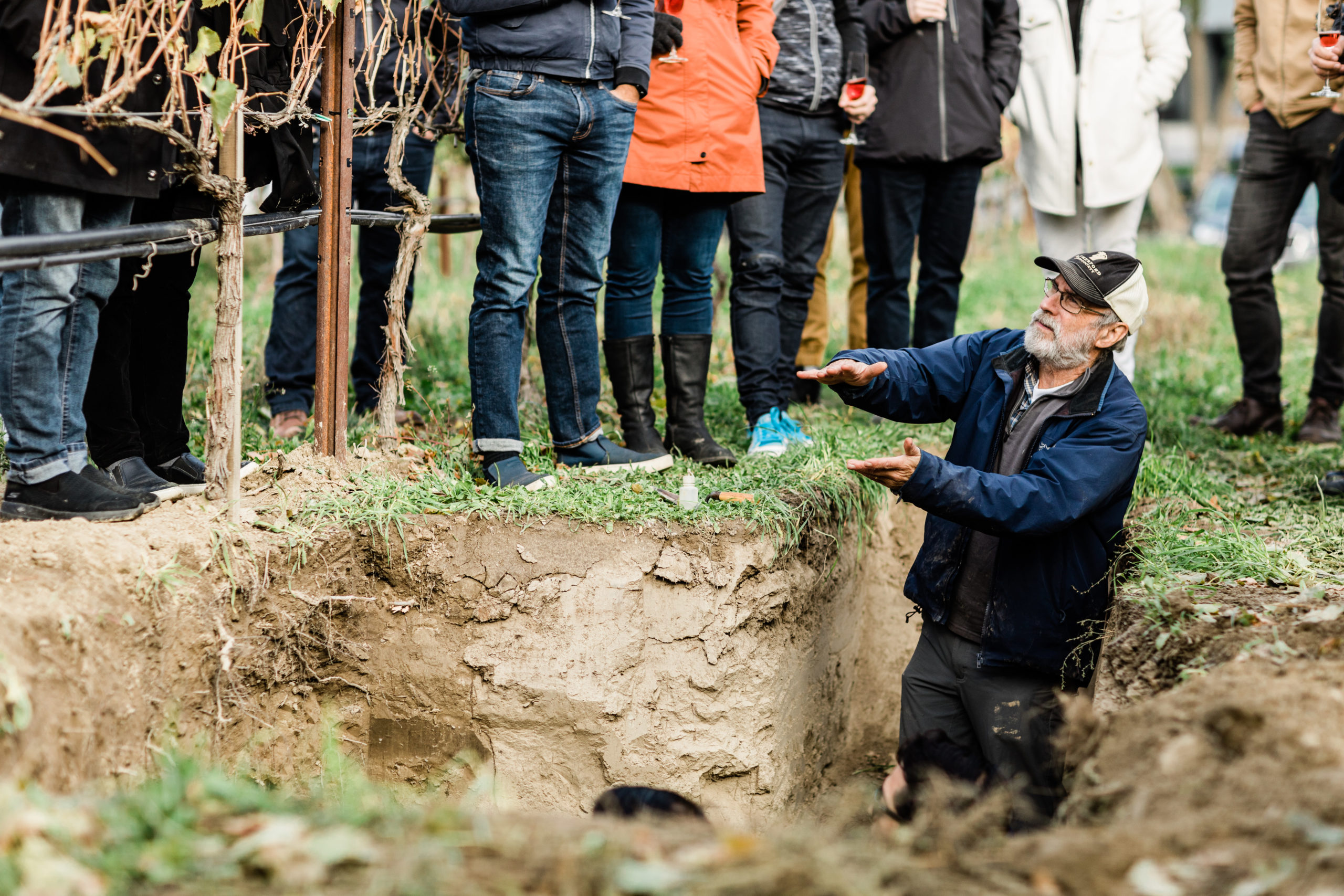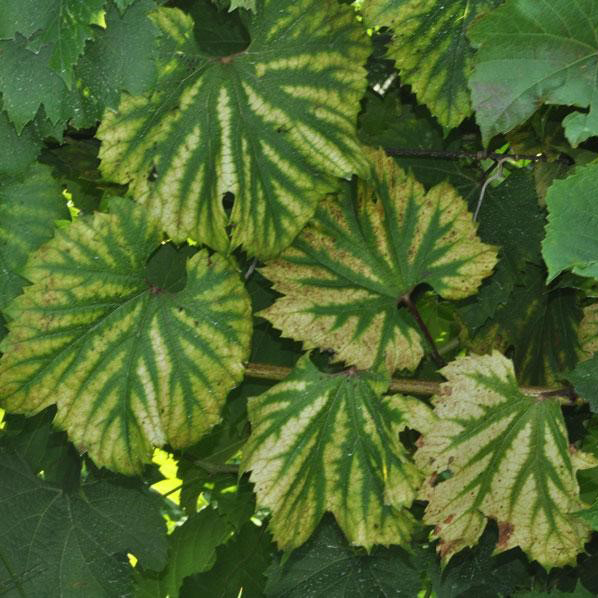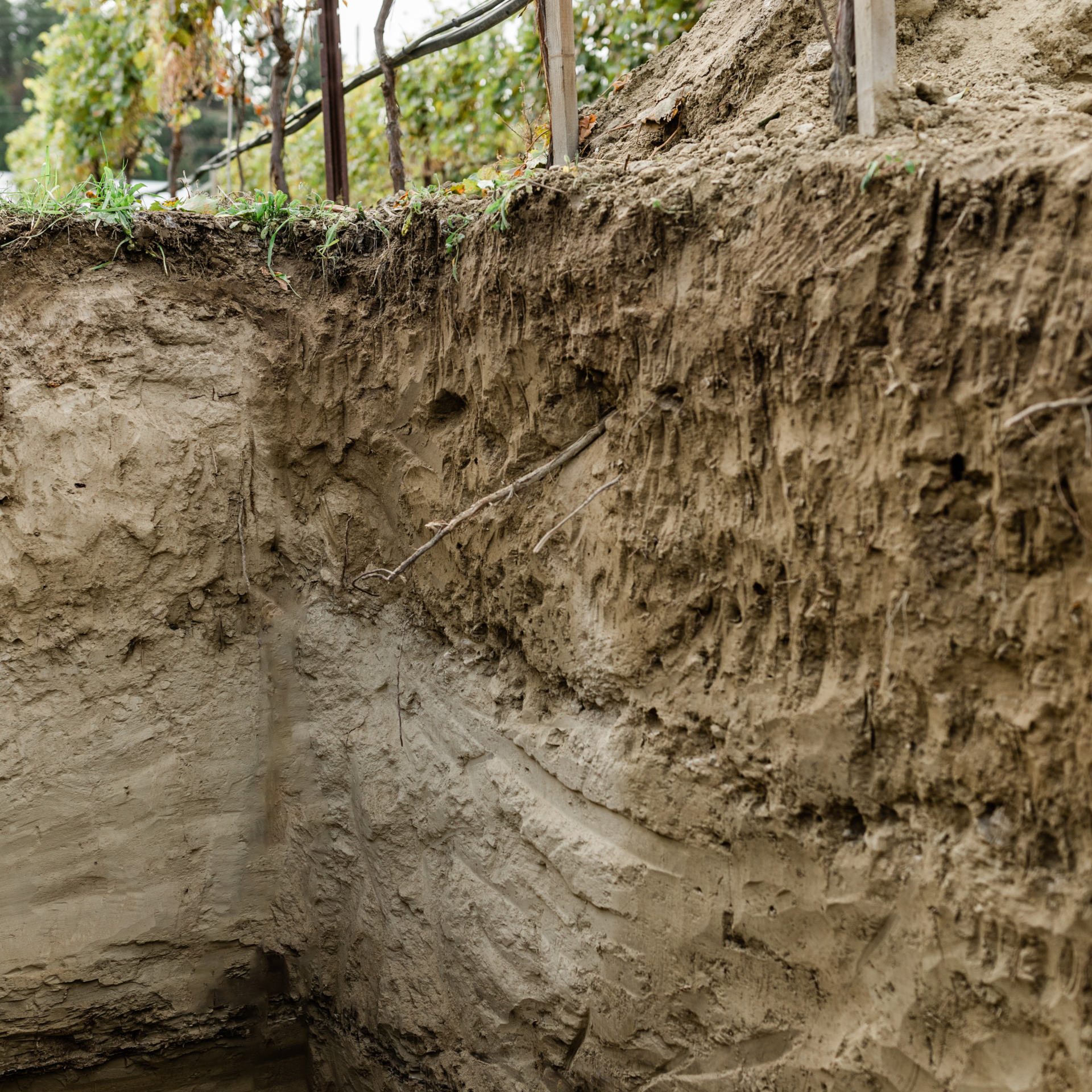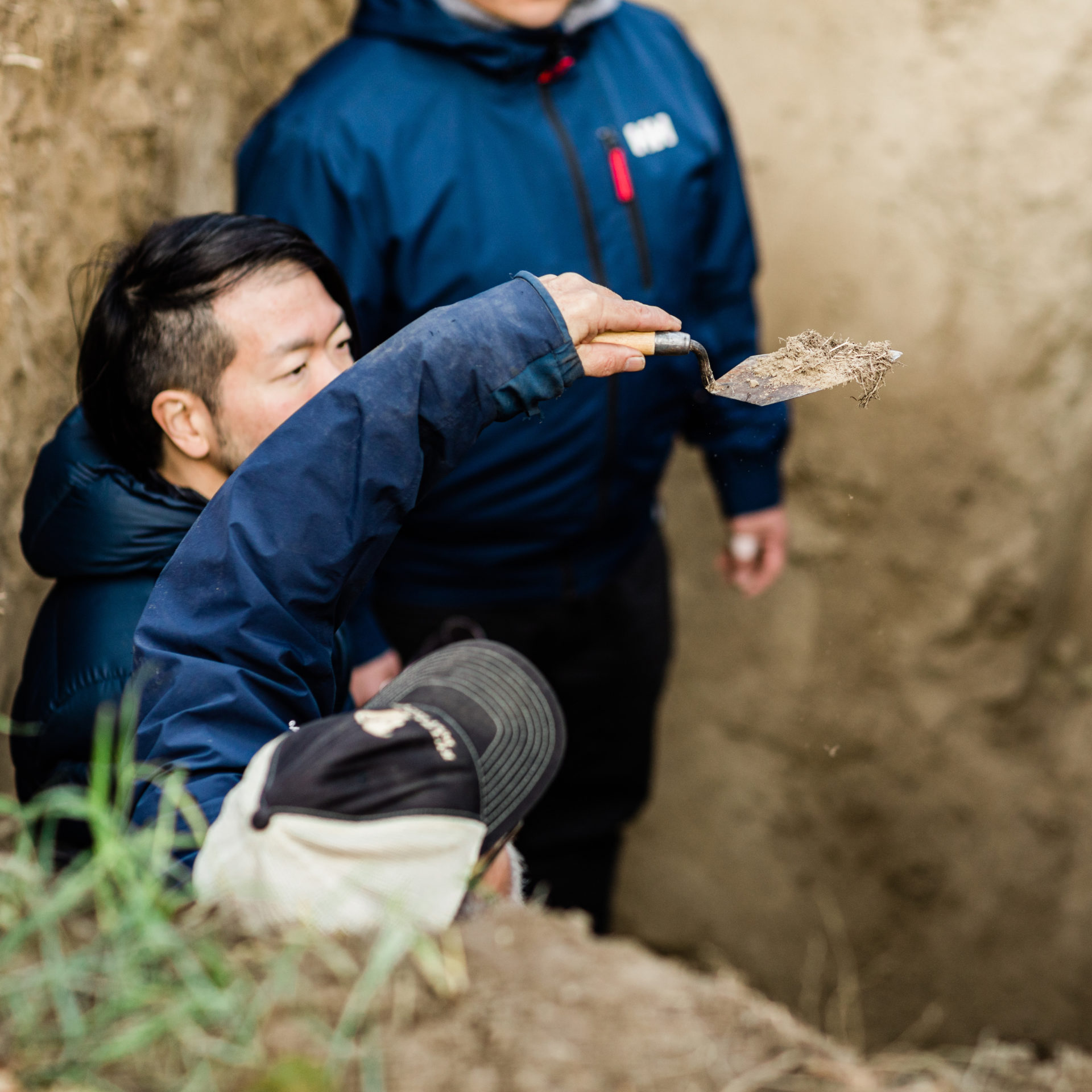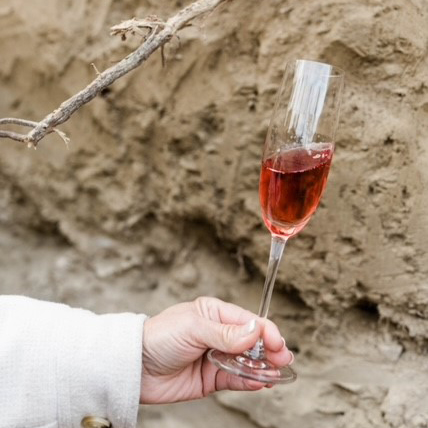Science class is back in session. But this time, we’re getting out of the lab and into the vineyards to talk about soil!
We are taught at a young age that plants need water, sunlight and soil to grow. But what is actually in the soil that contributes to the plant? In addition to supporting the roots, soil will influence water drainage, what nutrients and minerals are available, and heat-holding capacity. Let’s dig a little deeper…
Soil is most commonly distinguished by its texture and particle size. On opposite ends we have clay (very fine particles, poor drainage) and sand (large particles and excellent drainage). Silty soil is the middle ground between the two in particle size and drainage qualities. And finally, loam is a mixture of all three in various ratios. Soil can be broken down even further, by describing it based on the abundance of minerals and organic matter which are both necessary for happy plants.
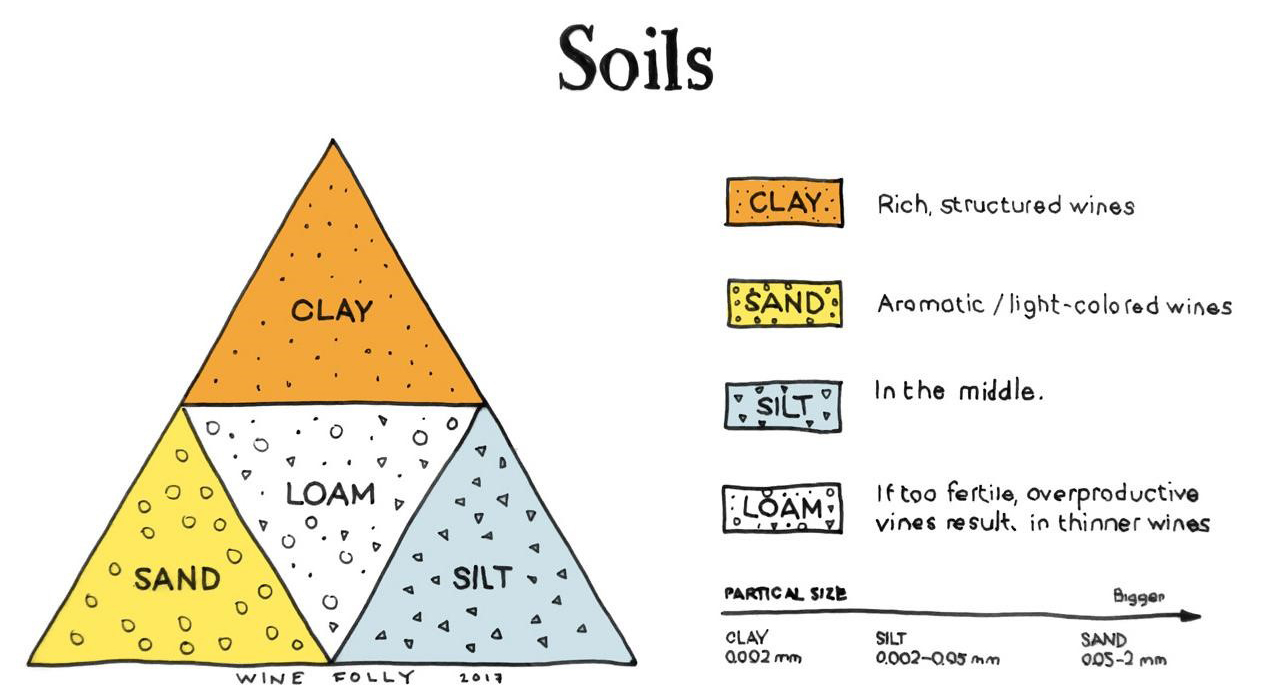
Here we have an overview of our vineyards and how the land was formed thousands of years ago from a glacial lake. The sediment left behind is called ‘glaciolacustrine’ and that is what underlies our vineyards. We recently had a soil assessment done at both the Monte Creek and Lions Head vineyards so we could find out more information. In the report prepared by Scott Smith, M.Sc, P. Ag, we learned some interesting things about the soil we grow our grapes from.
Our topsoil has a neutral pH and is made up of clay, silt, and fine sand with very few stones which means it drains well but still holds some moisture. The vines love this and can grow their roots deep into the soil, over 1.5 m in some areas! Our soil is also rich in base elements essential for plant growth: calcium, magnesium, and potassium. If these elements were lacking, they would need to be added with fertilizers.
When looking at glaciolacustrine soils, it is common to have more calcite (a calcium-based carbonate mineral) than dolomite (magnesium based). Interestingly, in the soil at our Lions Head vineyard, dolomite was more prevalent. The abundance of dolomite means that our vines have access to plenty of magnesium, which is a good thing. Among other processes, magnesium is the central atom in a chlorophyll molecule (the chemical that gives plants their green colour) so if vines are deficient, their leaves turn yellow between the veins. Given our soil profile, we won’t run into this issue!
- Magnesium deficiency example.
- Our soil is rich in dolomite.
- Happy vines, happy wines.
So how does all that translate into our wines? Having rich, healthy soil is an important starting point for growing any plant. With the information that we learned from our soil report, it has confirmed that we are in a prime position for growing grape vines. And if our vines are happy, we get high-quality fruit. And high-quality fruit means we can make beautiful wines for our customers.
 About the Author: Monte Creek Winery’s Enologist
About the Author: Monte Creek Winery’s Enologist
Liisa MacLean (she/her) has a Master’s Degree in Chemistry and a Grape and Wine Technology Certificate from the Cool Climate Oenology and Viticulture Institute (CCOVI). She is passionate about wine, sustainability and science communication. Connect with her on Twitter @NerdyAboutWine

